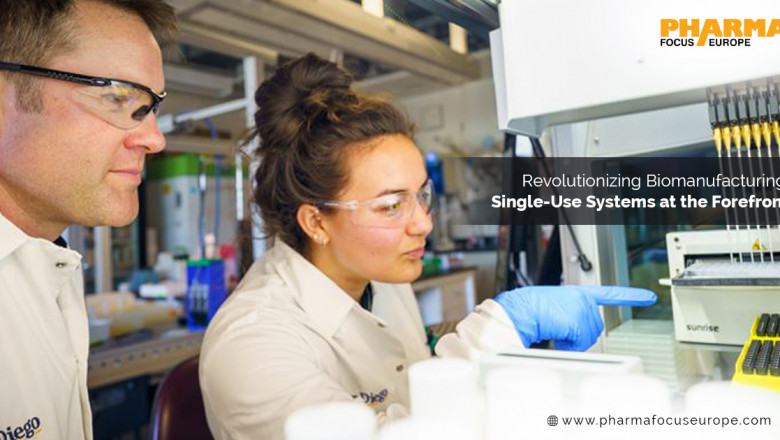views
Revolutionizing Biomanufacturing: Single-use Systems at the Forefront
Single-use systems are transforming biomanufacturing by eliminating cleaning processes, reducing contamination risks, and increasing flexibility. Advantages include reduced resource consumption and improved scalability. Implementation requires infrastructure compatibility and regulatory compliance. Future trends include automation and sustainable components, promising a more efficient and eco-friendly industry.

Introduction:
In the rapidly evolving field of biomanufacturing, single-use systems have emerged as a game changer. With their ability to optimize efficiency, reduce contamination risks, and lower costs, these systems are revolutionizing the way biopharmaceuticals are produced. This article delves into the forefront of this new era, exploring the transformative potential of single-use systems in biomanufacturing.
Traditional Biomanufacturing Processes
Biomanufacturing has traditionally relied on stainless-steel equipment, which required extensive cleaning processes between batches. These processes were not only time-consuming but also posed a risk of cross-contamination. The need for complex cleaning procedures limited manufacturers' ability to quickly switch between different products or scale up production to meet market demands.
However, with the advent of single-use systems, these challenges are being overcome. Single-use systems are designed to be disposable, eliminating the need for cleaning and sterilization. This allows manufacturers to seamlessly transition between different products without the risk of contamination, streamlining operations and increasing overall efficiency.
Challenges with Traditional Biomanufacturing Systems
Traditional biomanufacturing systems have several limitations that hinder their effectiveness in meeting the demands of the modern pharmaceutical industry. The cleaning and sterilization processes required for stainless-steel equipment are not only time-consuming but also resource-intensive. These processes consume significant amounts of water and energy, contributing to the environmental impact of biomanufacturing.
Furthermore, the rigid nature of stainless-steel equipment makes it difficult to adapt to changing market demands. Scaling up production or introducing new products often requires significant investment in infrastructure and equipment, which can be both costly and time-consuming. This lack of flexibility hampers manufacturers' ability to quickly respond to market changes and can result in missed opportunities.
Discover more: https://www.pharmafocuseurope.com/articles/revolutionizing-biomanufacturing-single-use-systems-at-the-forefront






















Comments
0 comment